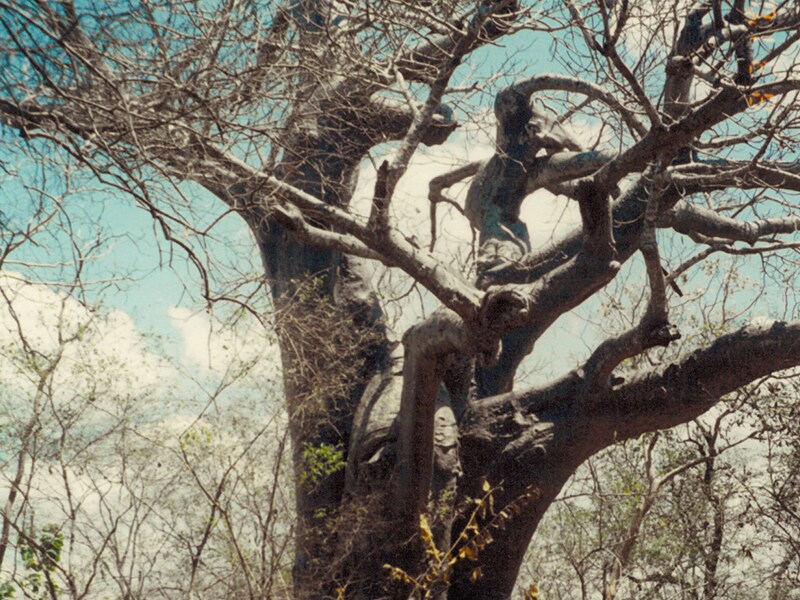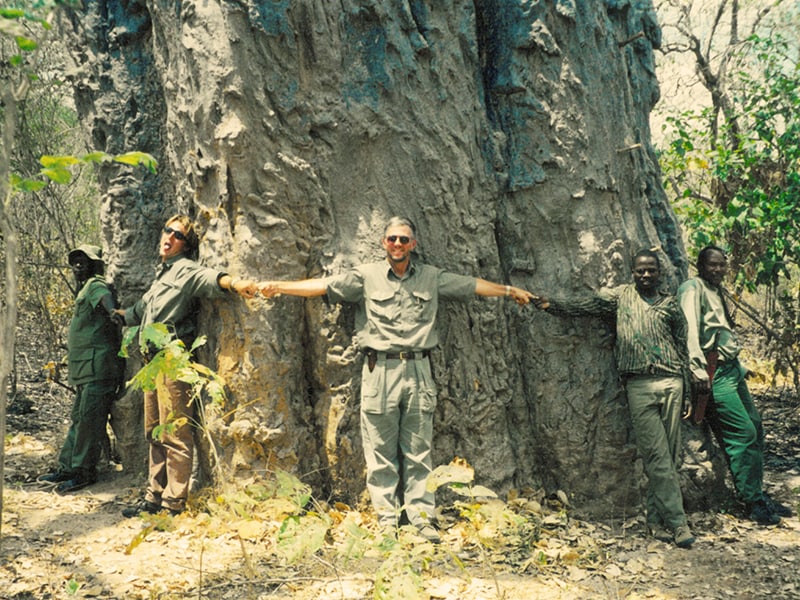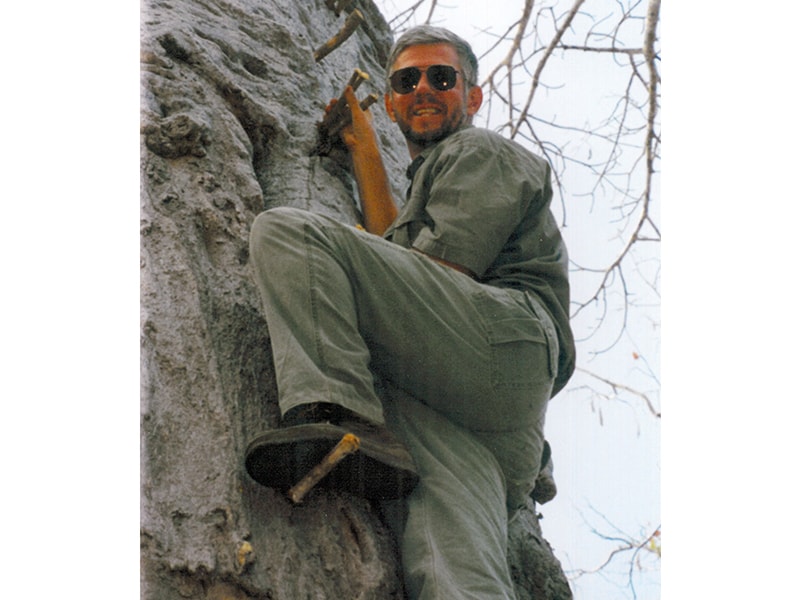To Climb a Baobab Tree

It had been a long and successful safari; we had collected most of the desired trophies and were driving around on the dirt roads enjoying the last few days in the bush without a pressing agenda to collect more.
This area has lots of baobab trees and a big one was coming up on our right, about a hundred yards out in the light bush. We stopped the car and walked over to have a look and take some pictures. It’s pretty special just being around these big trees. One doesn’t have this luxury of time when the hunting is serious, but today it wasn’t.
The mass of this tree was awesome, and it was badly scared from hundreds of years of gouging by the elephants during the dry seasons. The PH, noticing my awe, asked if I would like to climb it. I looked the tree up and down for a moment, turned back to the PH; smiled and said “yes, but how?”

He told me that in Maasailand, where our trackers lived during the off season, that honey bees often make their hives up in forks of the branches and the Maasai simply drive sticks into the soft bark of the baobab tree, in order to climb up and get the honey.
So, the trackers used their ‘ever-present’ corn knives (pangas) to cut a few small pieces of brush and made up some sticks about a foot long, and perhaps an inch across. Then, using the sides of the same corn knives, one of the trackers drove the first stick half way into the side of the tree about three feet above the ground and another five feet up. The third stick required the tracker to climb onto the first two, which he did; and he then proceeded to climb and drive sticks all the way up to the first forked limbs, at which time the sticks were no longer necessary. The whole process only took twenty minutes, after which the tracker climbed down and I climbed up.
If I ever get lost in Africa and have to spend the night in the bush, now at least I know how to climb a baobab tree to get above the hyenas and lions, or perhaps to look for honey.

